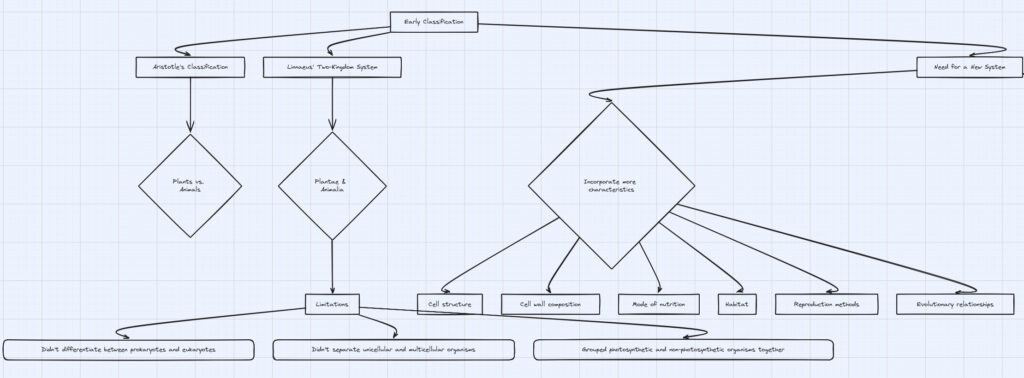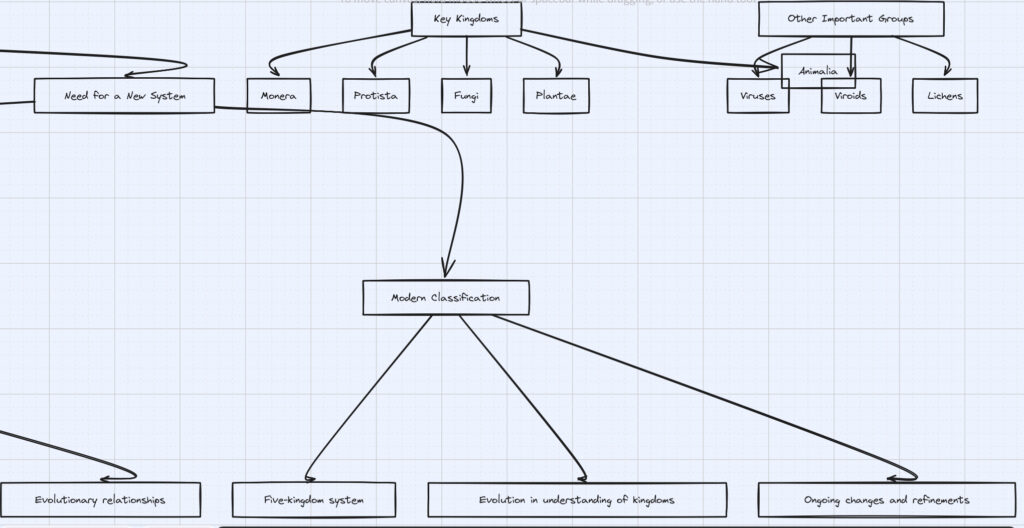Biological Classification (Introduction)

/
BIOLOGICAL CLASSIFICATION
- Early Classification:
- Driven by practical needs (food, shelter, clothing).
- Aristotle’s simple classification:
- Plants: Trees, shrubs, herbs (based on morphology).
- Animals: Red-blooded vs. non-red-blooded.
- Linnaeus’ Two-Kingdom System:
- Plantae & Animalia
- Limitations:
- Didn’t differentiate between prokaryotes and eukaryotes.
- Didn’t separate unicellular and multicellular organisms.
- Grouped photosynthetic (algae) and non-photosynthetic (fungi) organisms together.
- Need for a New System:
- Many organisms didn’t fit into plant or animal categories.
- Need to incorporate characteristics beyond morphology:
- Cell structure
- Cell wall composition
- Mode of nutrition
- Habitat
- Reproduction methods
- Evolutionary relationships
- Modern Classification:
- Kingdoms beyond Plantae and Animalia introduced.
- Five-kingdom system (includes Monera, Protista, Fungi)
- Understanding of which organisms belong to specific kingdoms has evolved.
- Ongoing changes and refinements to classification systems.
Key Kingdoms:
- Monera: Prokaryotic organisms (e.g., bacteria)
- Protista: Mostly unicellular eukaryotic organisms (e.g., amoeba, algae)
- Fungi: Eukaryotic, heterotrophic organisms with chitinous cell walls (e.g., mushrooms, yeasts)
- Plantae: Eukaryotic, multicellular, photosynthetic organisms with cellulose cell walls (e.g., trees, ferns)
- Animalia: Eukaryotic, multicellular, heterotrophic organisms without cell walls (e.g., insects, mammals)
Other Important Groups:
- Viruses: Non-cellular entities, considered non-living by some.
- Viroids: Infectious agents composed of RNA.
- Lichens: Symbiotic associations between fungi and algae.


